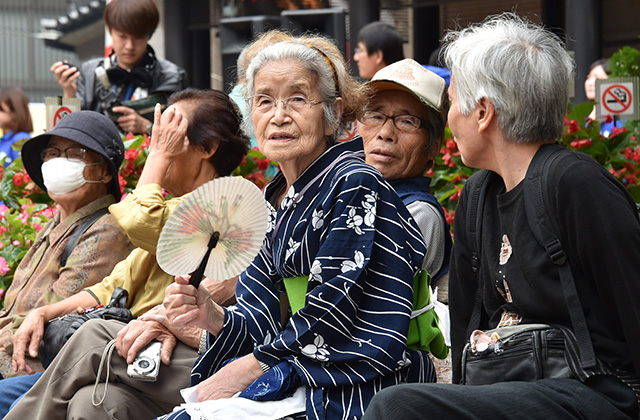
Japan, a country known for its technological advancement and orderly society, faces a major challenge in 2025 that is often called the “2025 Problem.” This year marks a significant demographic shift as the generation born between 1946 and 1964, during the postwar (WWII) baby boom, reaches age 75 and above. The transition of this large group into advanced age is reshaping both Japan’s social structure and economic foundations.
Japan Faces a Deepening Demographic Shift
Japan’s population decline is sharper than that of any other major developed country. In 2024, the number of annual births dropped below 700,000, and the fertility rate reached a historic low of 1.15. In contrast to countries like India, which have large and growing young populations, Japan’s younger generations are shrinking because fewer people are choosing to have children.

The Japanese government has introduced incentives for new mothers, such as free health check-ups, childcare support, and family-friendly services. These measures are designed to encourage childbirth, but the effects remain limited. With a growing elderly population and a declining number of working-age individuals, public services are under increasing strain. Schools in some rural areas are closing due to low enrollment, and more homes are vacant as people move or population numbers fall. Traditional multi-generational households are also less common and many elderly now live alone, often without consistent care or support.
Economic and Social Impacts for Japan
The economic consequences are substantial. Social security costs make up a growing share of the national budget. Japan holds the highest public debt among developed nations, around 263% of GDP. Real wages have declined for three straight years, increasing economic uncertainty for younger people and discouraging family formation. As fewer young people pay taxes, government revenues fall and the financial strain on welfare systems intensifies. The fading of multi-generational households and the rise in elderly living alone have led to increased concerns about mental health and social isolation.

Policy Responses and Challenges
Japan’s government has implemented several responses, including policies to assist working parents, moderate immigration, and invest in automation and robotics to address labor shortages. There are ongoing efforts to improve gender equality and encourage a better work-life balance, but longstanding cultural norms have slowed progress. Childcare and eldercare services have expanded, but the changes are not yet enough to shift demographic trends or reduce economic pressure on families. Meanwhile, increased participation of foreign labor is encouraged in sectors facing shortages, but immigration laws remain cautious and access to long-term residency is still limited compared to other developed countries.
Facilities and Support for Foreign Residents
Recent reforms aim to make life easier for foreign residents:
- Integration programs offer language training, cultural orientation, and avenues for reporting workplace or community concerns.
- Certain skilled workers can now apply for long-term or permanent residency and bring family members.
- Administrative support is available through centers such as the Foreign Residents Support Center, which provides multilingual legal and social guidance.
- Despite these improvements, language barriers and occasional discrimination remain issues. Integration policies are still being refined as Japan’s reliance on foreign labor grows.
Domestic and Global Implications
Japan’s demographic crisis has both domestic and international consequences. As the labor force shrinks and domestic consumption slows, Japan’s position in global trade, technology, and regional partnerships may change. A more inward focus could influence defense budgets, East Asian diplomacy, and the country’s role in addressing shared global challenges like climate change and security. The way Japan balances technological innovation with cautious immigration will serve as an example for other aging societies, such as South Korea, parts of Europe, and, eventually, China. Japan’s response to this challenge will not only determine its own future, but could guide countries facing similar issues.
Is Japan prepared to redefine what it means to be a resilient nation in a rapidly changing world?
for more such informative articles, checkout The World Times.



